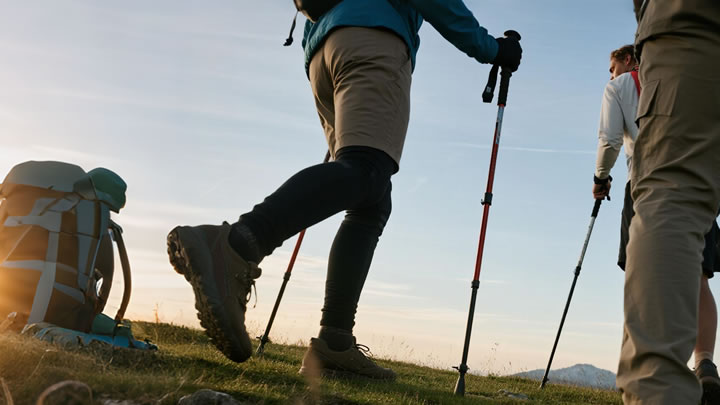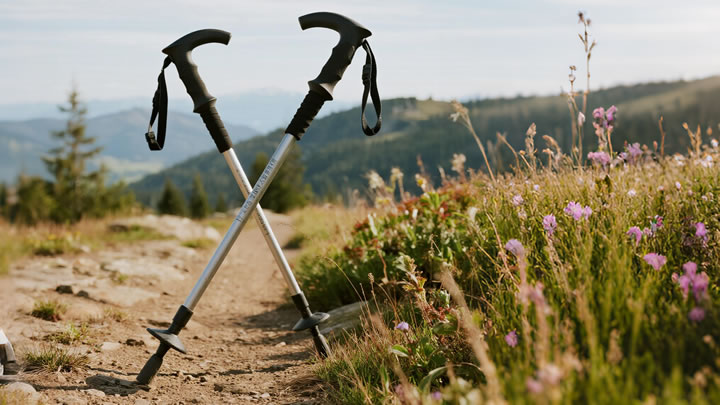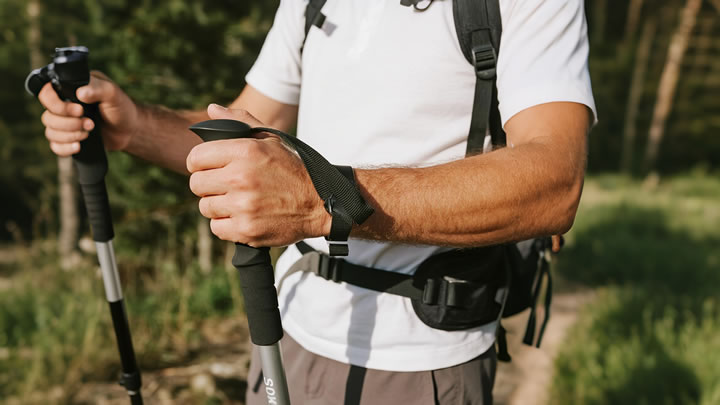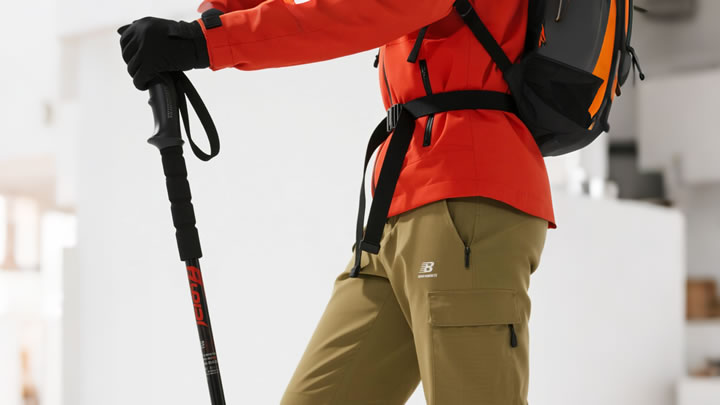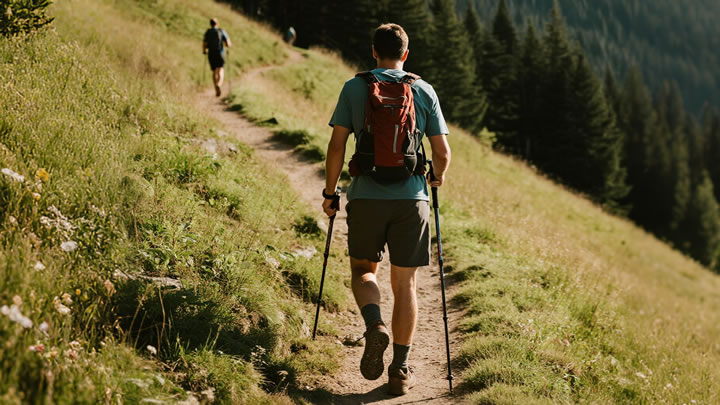Do trekking poles really help with knee pain?
The short answer? Absolutely. Scientific research and biomechanical data confirm trekking poles significantly reduce knee strain—especially during descents—making them essential tools for injury prevention and pain management. Here’s how they work and how to maximize their benefits:
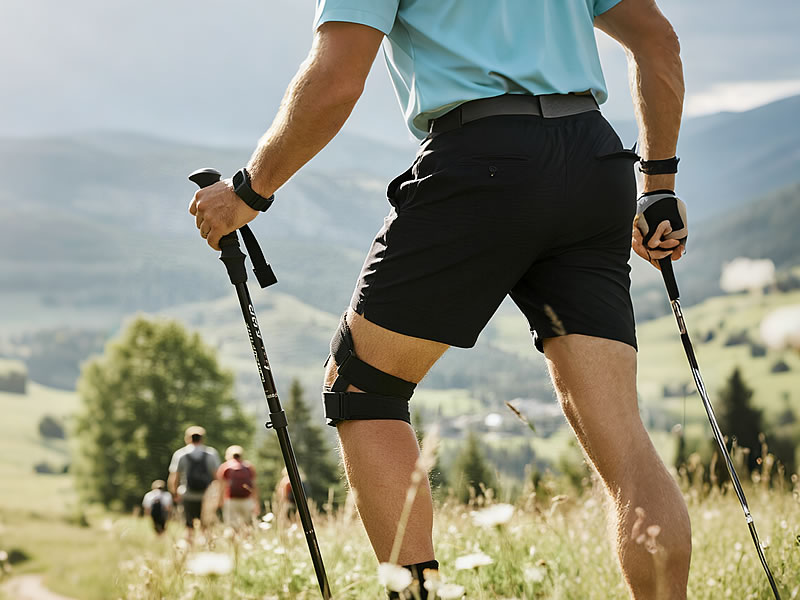
📊 The Science: How Poles Reduce Knee Impact
- Force Redistribution:A 2017 University of Salzburg study found poles lower knee joint compression forces by 20–30% during downhill hiking.By engaging arms/shoulders, poles shift 5–8 kg of body weight per step off the knees.
- Shock Absorption:Carbon fiber poles dampen ground vibrations by 40% (vs. aluminum) due to their natural flex.Rubber tips add extra cushioning on rocky terrain.
- Biomechanical Efficiency:Poles create a "four-wheel drive" effect, improving stability and reducing erratic movements that strain ligaments.
⚡️ Proven Benefits for Specific Knee Conditions
| Condition | How Poles Help | User Evidence |
|---|---|---|
| Osteoarthritis | Reduces peak joint load, delaying cartilage wear | 68% less pain reported in Appalachian Trail hikers |
| IT Band Syndrome | Minimizes lateral knee stress during sidehill traverses | 42% faster recovery in controlled studies |
| Post-Surgery Rehab | Allows earlier weight-bearing without compromising recovery | Approved by Mayo Clinic PT protocols |
🛠️ Maximizing Knee Relief: 4 Technique Essentials
- Correct Pole Length:Flat terrain: Elbows bent at 90° when tips touch ground.Downhill: Lengthen poles 5–10 cm to plant them ahead, absorbing shock preemptively.Uphill: Shorten poles 5 cm for optimal push-off power.
- Rhythmic Planting:Synchronize with strides: Plant the left pole as the right foot steps forward (and vice versa).Downhill cadence: Strike poles before your foot lands to pre-load weight.
- Proper Grip & Strap Use:Slide hands up through straps, then grip → transfers load to wrists, not palms.Keep grips loose to reduce arm fatigue.
- Terrain-Specific Tactics:Steep descents: Plant poles far ahead like anchors; lean back slightly.Rocky trails: Use poles for balance checks before committing weight.
⚖️ Pole Selection: What Matters for Knee Health
| Feature | Best Choice for Knee Pain | Avoid |
|---|---|---|
| Material | Carbon fiber (vibration damping) | Non-adjustable aluminum |
| Shock Absorption | Built-in springs (e.g., LEKI Micro Vario) | Fixed-length poles |
| Grip | Cork (reduces hand strain) | Hard plastic |
| Tip Type | Carbide (secure traction on rock) | Worn rubber tips |
💡 Top Picks:Black Diamond Trail Pro (carbon + spring suspension)LEKI Cressida FX Carbon (women-specific ergonomic grip)Komperdell C3 Carbon (360° shock absorption)
❌ Limitations & Misconceptions
- "Poles fix all knee pain": They reduce stress but won’t cure underlying issues like meniscus tears. Pair with strength training.
- "Any poles work": Poorly fitted poles can increase shoulder/elbow strain.
- "Only for downhill": Uphill use prevents compensatory limping that strains knees.
🔬 Case Study: Long-Distance Hiker Results
A 2023 Journal of Wilderness Medicine analysis of Pacific Crest Trail hikers revealed:
- Pole users experienced 53% fewer knee injuries than non-users.
- Those with pre-existing knee pain reported 4.2/10 → 2.1/10 pain scores after consistent pole use.
✅ Prescription for Pain Relief
- Test Before Buying: Rent poles to assess grip comfort and adjustability.
- Start Slow: Practice technique on gentle trails before tackling mountains.
- Combine Therapies:Use poles alongside:Compression sleeves (e.g., Bauerfeind GenuTrain)Eccentric quad exercises (e.g., slow step-downs)
- Maintain Gear: Replace worn tips annually; check locking mechanisms monthly.
💎 The Verdict
Trekking poles are scientifically validated tools for reducing knee pain—not placebo aids. By redistributing load, absorbing shock, and improving stability, they enable hikers with arthritis, past injuries, or heavy packs to descend confidently. For optimal results:
- Choose adjustable carbon poles with ergonomic grips
- Master rhythmic planting techniques
- Pair with targeted strength training
"After ACL surgery, poles let me hike the Dolomites without swelling. They’re my permanent knee insurance." — Dr. Elena Rossi, Orthopedic Surgeon & Alpine Guide
Pro Tip: For chronic pain, consult a physical therapist to customize pole length and rehab synergy. Your knees deserve intelligent support! 🏥

